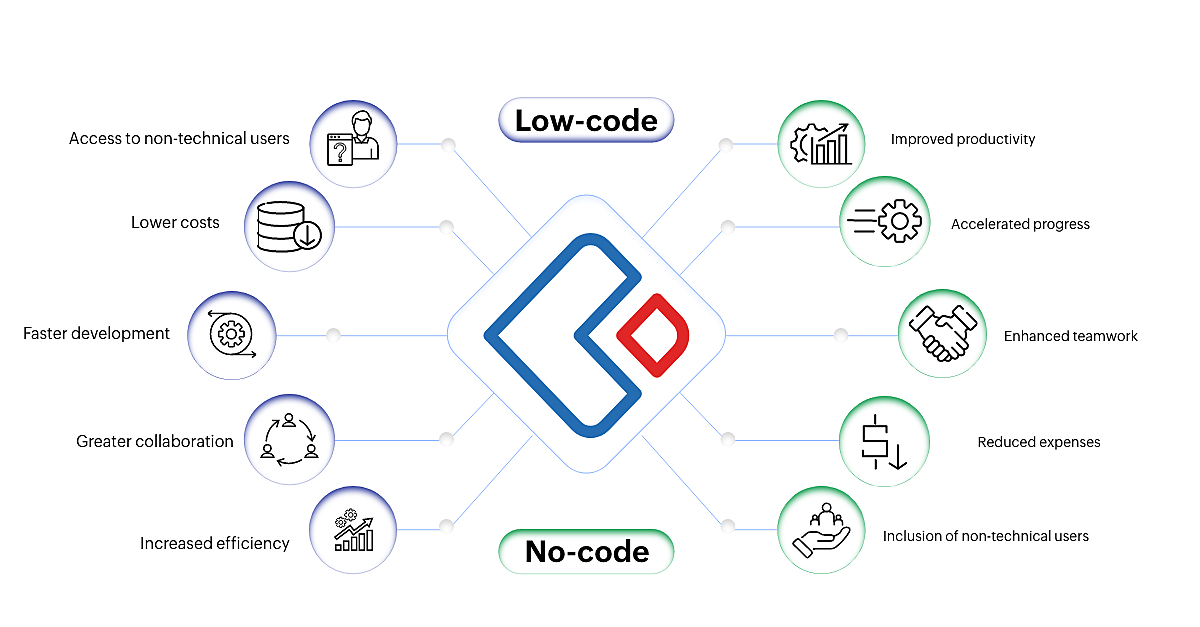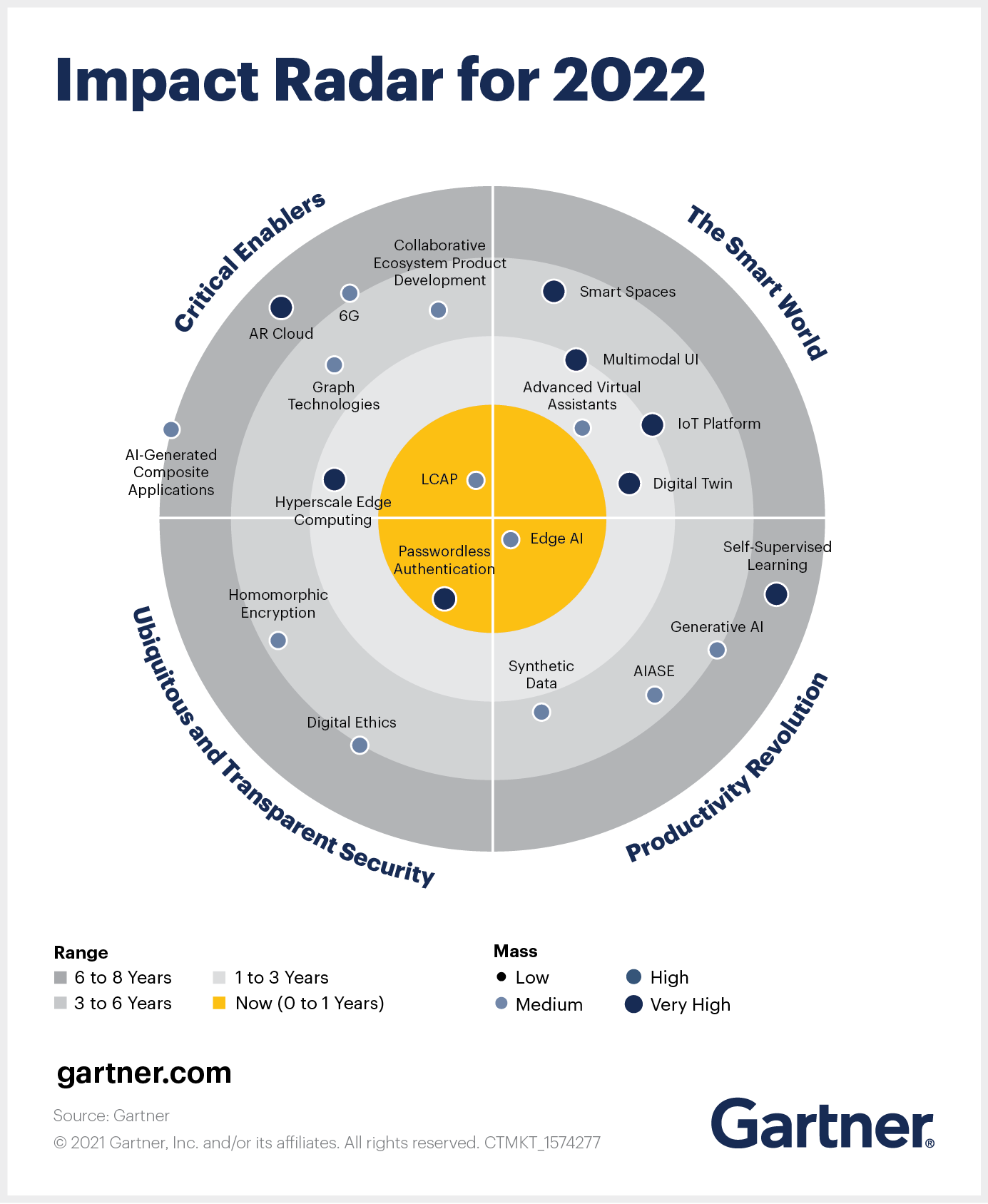- HOME
- Know Your Tech
- Low-code/no-code: Why is it the future of app development?
Low-code/no-code: Why is it the future of app development?
- Last Updated : July 18, 2023
- 1.1K Views
- 7 Min Read
Low-code/no-code development is a revolutionary approach that's reshaping the way software is built, and empowering individuals from all walks of life to become creators in their own right. Buckle up as we embark on a journey to uncover the wonders of this cutting-edge paradigm, its remarkable advantages, and the thought-provoking challenges it presents to the ever-evolving software development industry.
This article will explore what low-code and no-code are, their benefits and drawbacks, and their potential impact on the software development industry.
A study by TechRepublic found that 41% of IT leaders are already using low-code/no-code platforms, and 10% are planning to adopt this approach in the next 12 months.
Low-code and no-code are related approaches to software/application development. They use intuitive graphical interfaces and visual tools to create applications, allowing individuals without coding expertise to participate. Despite some differences, low-code and no-code share fundamental principles, so we'll mostly treat them as interchangeable terms. Now let's delve into their innovative world and possibilities!
What is low-code?
Low-code is a software development approach that allows people to create applications with minimal coding or programming knowledge. It involves using visual interfaces, drag-and-drop tools, and prebuilt components to design and assemble software solutions.
Rather than writing lengthy lines of code, low-code platforms provide a simplified way to build applications, by leveraging preexisting building blocks and automation. This approach streamlines the development process, enabling individuals to quickly create functional software when compared with traditional coding practices.
Low-code development empowers users to focus more on the application's functionality and user experience, making application development accessible to a wider range of people, including those without extensive programming expertise.
What is no-code?
No-code is a software development approach that allows individuals to build applications without any coding or programming knowledge. It provides tools and platforms with user-friendly interfaces that enable users to create software solutions using visual interfaces, drag-and-drop functionality, and prebuilt components. With no-code platforms, individuals can assemble and customize applications by simply selecting and configuring different elements, without having to write or understand complex lines of code.
No-code platforms democratize software development by eliminating the requirement for coding skills, enabling people from various backgrounds and expertise levels to create functional applications. No-code development emphasizes simplicity and ease of use, empowering nontechnical users to transform their ideas into software solutions quickly and efficiently.
No-code platforms democratize software development by eliminating the requirement for coding skills, enabling people from various backgrounds and expertise levels to create functional applications. No-code development emphasizes simplicity and ease of use, empowering nontechnical users to transform their ideas into software solutions quickly and efficiently.
The benefits of low-code/no-code platforms

Increased efficiency
Low-code/no-code platforms allow developers to write code and build applications faster than traditional methods. Instead of writing code from scratch, developers can use prebuilt components and templates to create applications in a fraction of the time. This approach can save time and reduce development costs.
Faster development
Low-code/no-code platforms allow developers to build applications quickly and easily. With a visual interface, developers can see their applications as they build them, making it easier to identify and fix errors. This approach can reduce the time needed to develop an application and can help developers get their products to market faster.
Lower costs
Low-code/no-code platforms can be more cost-effective than traditional software development methods. With prebuilt components and templates, developers can create applications quickly, and with fewer resources. This approach can reduce application development costs and allow companies to allocate resources to other areas of their business.
Greater collaboration
Low-code/no-code platforms can enable greater collaboration between professional developers and non-technical users. With a visual interface, non-technical users can participate in the development process, providing feedback and making changes to the application as it's being built. This approach can increase collaboration and lead to better applications.
Access to non-technical users
Low-code/no-code platforms give non-technical users access to the software development process. With prebuilt components and a visual interface, non-technical users can create applications without writing any code. This approach can empower business users to create their own applications and reduce the burden on IT departments.
The drawbacks of low-code/no-code platforms
Misalignment between abstraction and customization
Low-code/no-code platforms aim to simplify the software development process by abstracting complex coding tasks into visual interfaces and prebuilt components. However, this abstraction can sometimes limit the level of customization that developers can achieve. This misalignment can be frustrating for developers who seek to strike a balance between leveraging the convenience of low-code and tailoring their applications to meet specific needs.
Finding the right equilibrium between abstraction and customization is crucial to ensuring that low-code/no-code solutions effectively align with individual business objectives.
Limited functionality
Low-code/no-code platforms may not offer the same level of functionality as traditional software development methods. With prebuilt components and templates, developers may not be able to create applications that require advanced programming knowledge. This approach is not always suitable for companies that require advanced functionality for business apps.
Steep learning curve
Despite the intention to simplify development, low-code and no-code platforms have their own learning curves. Each platform has its own unique interface, terminology, and workflow. Users need to invest time and effort to familiarize themselves with these tools and understand how to leverage their capabilities effectively.
The impact of low-code/no-code solutions on the software development industry
Low-code and no-code development approaches hold immense potential to revolutionize the software development industry. By enabling individuals without technical expertise to create applications, these approaches foster democratization in software development and alleviate the burden on IT departments. Moreover, they offer tangible benefits, such as time and cost savings, making software development more accessible to small businesses, citizen developers, and startups.

A reference image attached above from Gartner's research on 5 impactful emerging tech for 2022 ranks low-code application platforms (LCAP) as rapidly developing technologies that are changing the market landscape and leaving a larger impact on organizations' digital transformation.
The rise of low-code/no-code platforms has revolutionized the software development industry, empowering nontechnical individuals to build applications without coding expertise.
This trend has accelerated innovation and democratized software development, reducing dependency on traditional coding and expanding the pool of creators in the digital landscape.
How to choose the right low-code/no-code platform?
Are you unsure about how to choose the best low-code/no-code platform that suits your needs? Here are some points to keep in mind when evaluating the platforms available on the market.
Affordability
Assessing the cost is a crucial factor in selecting a low-code/no-code platform, given that many organizations have budget constraints, particularly during the initial stages of their low-code implementation. The key point to consider regarding the pricing of low-code/no-code platforms is that the more features you require, the higher the price you can expect to pay.
Only a small number of platforms provide a pay-as-you-go alternative for accessing features, making it essential to be prudent when evaluating the pricing of these platforms.
Ease of installation
Certain platforms involve the installation of software on your devices before you can commence building applications. While this grants organizations greater control over their installations, it adds complexity to the initial setup process, as there may be instances where your machine does not support the low-code platform's software.
On the other hand, some platforms only require a browser and an internet connection, making it generally the most user-friendly approach.
There are also hybrid platforms that require both installed software on your machine and access to their web-based platform through a browser, to facilitate development. This option represents a compromise between the alternatives mentioned above.
User-friendliness
There are two primary categories of individuals involved in app development: developers and business users. While developers typically have a wide range of platforms to choose from, it's the business users who benefit the most from low-code/no-code platforms.
Developer-friendly
These platforms equip developers with rapid prototyping capabilities, enabling them to create highly capable and functional software in a short amount of time, with minimal coding required.
Business user-friendly
These platforms empower individuals from non-technical backgrounds, commonly known as line of business users, to develop applications. These platforms are highly sought after, as they allow users with any level of technical expertise to build and deploy fully functional apps.
Overall, these two types of low-code/no-code platforms serve the distinct needs and skill sets of developers and business users, offering different levels of ease and flexibility in app development.
Here's an extensive analysis highlighting the best low-code platforms currently available in today's technological landscape.
Conclusion
Low-code/no-code platforms are a powerful approach to software development that has the potential to transform the industry. This approach can save time, reduce costs, and empower non-technical users to create their own applications.
When it is evident that low-code no-code platforms are the future of app development, choosing the right platform becomes a critical decision. Zoho Creator is one such platform.
Zoho Creator is a low-code application development platform that caters to a wide range of processes, spanning from no-code to low-code and pro-code capabilities. With it's large array of features and the solutions they offer, Zoho Creator is the ideal platform to adopt, when considering a low-code no-code platform. For more information on how to utilize the platform to it's best potential, visit our page now, and start your effortless app development journey today!
 Ashwin Raj S N
Ashwin Raj S NAshwin is a Growth Marketer for Zoho, with a passion for learning new things. In his spare time, he enjoys spending time with his family and friends, watching anime, and travelling.



